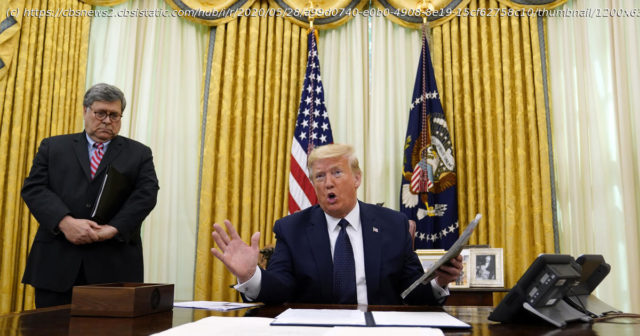The president and attorney general said the administration is working on legislation, too.
President Trump on Thursday signed an executive order taking aim at the legal shield that protects social media companies from liability for content posted by users on their platforms, ramping up his attacks on tech giants over alleged censorship and a first-ever fact check on his own tweets this week.
In an Oval Office signing Thursday, the president declared that social media companies that engage in “censoring” or any “political conduct” will not be able to keep that shield. One senior administration official told CBS News the order is intended to curb the protections social media companies have shield against liability for content like comments, posts and videos. The order would allow regulators to claim internet companies are censoring free speech when they delete users’ posts or accounts.
“The choices that Twitter makes when it chooses to suppress, edit, blacklist, shadow, ban are editorial decisions, pure and simple,” the president said Thursday. “They’re editorial decisions. In those moments, Twitter ceases to be a neutral public platform and they become an editor with a viewpoint, and I think we can say that about others also — whether you’re looking at Google, whether you’re looking at Facebook and perhaps others.”
He continued, “One egregious example is when they try to silence views that they disagree with by selectively applying a fact check…. Therefore today I’m signing an executive order to uphold the free speech and rights of the American people. Currently social media giants like Twitter receive an unprecedented liability shield based on the theory that they are a neutral platform, which they are not.”
The order calls for new regulations under Section 230 of the Communications Decency Act, which provides the shield for internet companies protecting them from liability for user content on their platforms.






